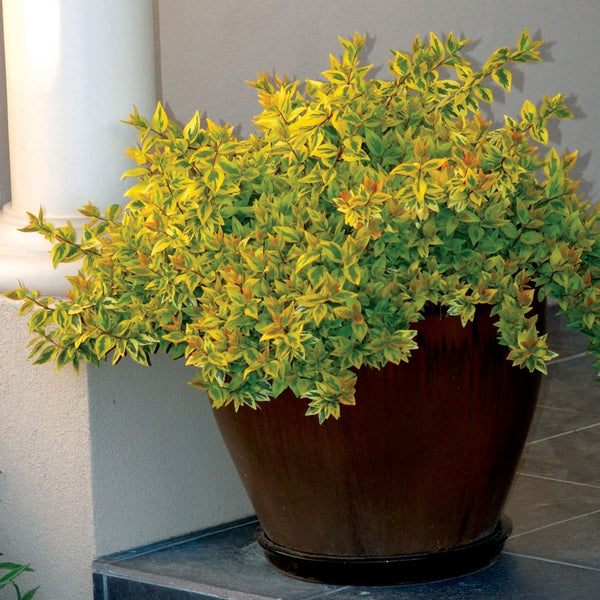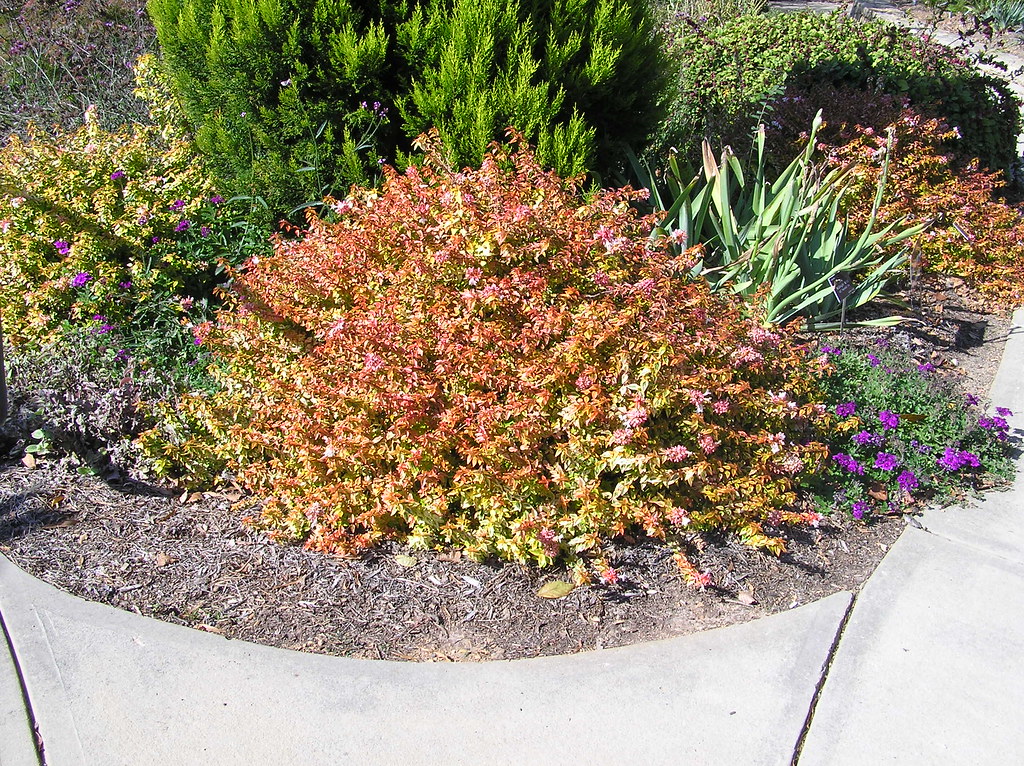
Furthermore, add water-soluble fertilizer to the plant during its growing period. Water the plant deeply during its first growing season, and after the plant has established, water it as needed.
#ABELIA KALEIDOSCOPE FERTILIZER FULL#
It prefers full to partial sun and rich, well-draining soil with an acidic pH. Heavenly bamboo is propagated through cuttings, both softwood and semi-hardwood. It grows fast and can be as tall as 7 feet and as wide as 5 feet once it matures. The plant grows best in a warm and wind-controlled environment. The best season to plant heavenly bamboo is the cool fall months, but not in extremely cool months. The tall plants help with abelia kaleidoscope care by creating shade over the plants. The plant has textured compound leaves and cane-like stems and bears cream-white flowers and bright red berries. Heavenly bamboo, also known as sacred bamboo, is a shrub that belongs to the Berberidaceae family and is native to Eastern Asia. This will save you from having maiden grass all over the place, as the flowers can self-seed. Trim the flower head to prevent them from self-seeding. It is necessary to clip maiden grass in early spring to keep it healthy. Once the plant is established, water it in extreme heat and drought. In the first growing season, water the plant generously to help strengthen the root system. Maiden grass prefers to grow in full to partial sun and moist but well-drained soil with a neutral to acidic pH. Divide it every three years or so to boost its growth. The ornamental grass propagates best through division. The grass does not require fertilizer or pesticides it will surely appreciate some organic soil rich in manure and compost. It has a slow growth rate and, once mature, it can be 3 to 8 feet tall. Maiden grass is planted in spring and can even be planted in fall, although planting it in spring gives it enough time to have an established root system before winter hits.

It makes a great backdrop for kaleidoscope abelia. The plant bears beautiful copper flowers that transform into silver-white plumes in fall. The ornamental grass has slender leaves in the form of clumps that spread out and up, resembling a fountain. Maiden grass is a prized perennial herbaceous ornamental grass that belongs to the Poaceae family and is native to Asia. Here are seven attractive kaleidoscope companion plants to make your kaleidoscopes the center of attention: 1. These abelia companion plants are chosen based on the same survival conditions, pollination, and ornamental purposes, etc. Kaleidoscope companion plants include plants that will help you decide what to plant with abelia Grandiflora to make it look more appealing. 7 Attractive Kaleidoscope Companion Plantsħ Attractive Kaleidoscope Companion Plants.Closely follow all directions and storage guidelines that are on the fertilizer label. Always wear protective gloves and a facemask when handling chemical fertilizers. Water thoroughly to help dissolve fertilizer.Apply fertilizer in early spring or late fall.Use a slow release granular fertilizer in a 10-10-10 ratio designed for shrubs.Slow-release granular fertilizers are often the best choice for their ease of application and prolonged usage, necessitating only one application a year at most. The best kind of fertilizer is a well-balanced 10-10-10 ratio of nitrogen-phosphorus-potassium. The next best time to fertilize your Abelia is in late fall after the growing season is over. The best time to fertilize your mature or established Abelia is in very early spring before you see any new growth and before the plant has broken dormancy.įertilizing after early spring pruning is recommended. Typically, newly planted Abelia do not need to be fertilized and can be prone to fertilizer burn at a tender young stage. Be careful to follow closely the application rate of the fertilizer you’ve chosen, making certain not to over apply and potentially burn the plant with too strong an application.

Rainfall or watering your Abelia will slowly apply the fertilizer to the root zone of your Abelia. Granular fertilizer can be applied per package instructions at the base of your Abelia. Abelias prefer an acidic to slightly alkaline soil with a pH between 5 to 7.5.

You will determine what type of soil you have along with its nutrient profile. You can obtain a soil test from your local extension agent. It is recommended to get a soil test to determine if your Abelia needs to be fertilized. Fertilizing supplements the nutrition they derive from the soil and will help improve the appearance, benefit the performance, and increase the disease resistance of your Abelia. Abelia are light feeders and have lower fertilization needs but you should fertilize your Abelia to benefit your plant’s overall performance and appearance. Abelia is a flowering semi-evergreen shrub popular in zones 5-9.


 0 kommentar(er)
0 kommentar(er)
